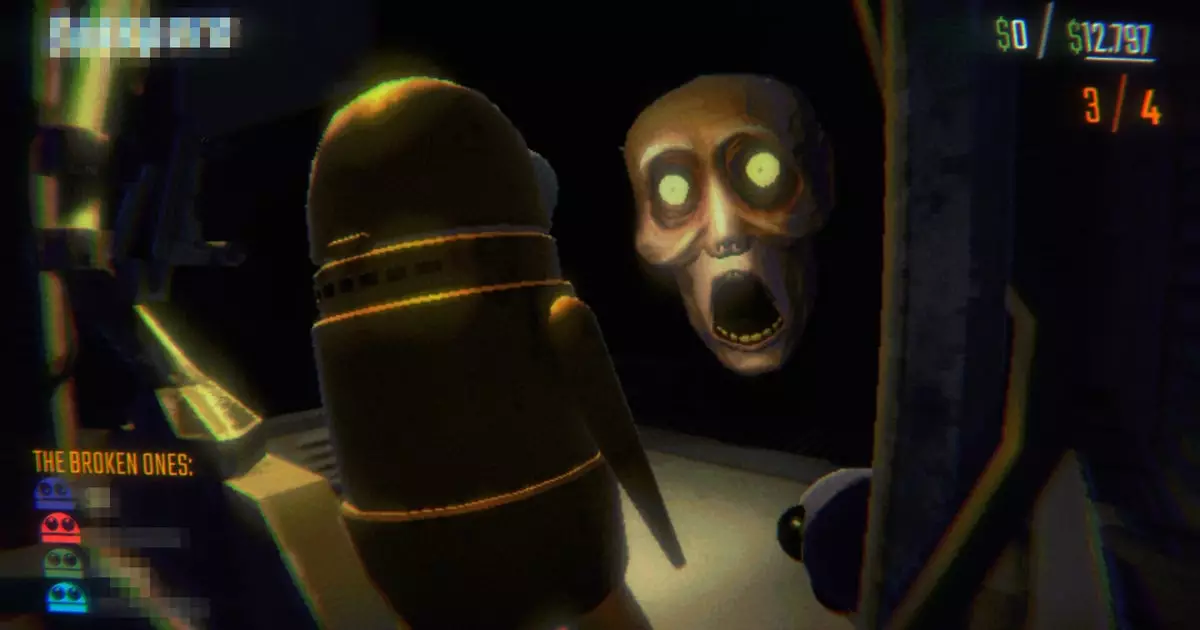R.E.P.O, a six-player cooperative extraction game, has captured the imagination of gamers and sits proudly atop Steam’s best-seller charts. It launched into early access on February 26 and quickly amassed a staggering 230,000 players. The allure of the game lies not just in its engaging premise but also in its unique, chaotic charm that differentiates it from the plethora of multiplayer titles available today. As players navigate a bizarre world filled with whimsically terrifying enemies—like elusive knife-wielding chef frogs and relentless ducklings—they embark on missions to extract valuable loot, which adds a layer of urgency to the experience.
This remarkable rise in popularity can be attributed to two key factors. First, the game acts as a veritable “flub factory”—a term aptly describing the myriad of absurd physics mishaps that erupt throughout gameplay. These mishaps provide ample opportunities for short, shareable video clips, making the game ideal for viral marketing in the age of TikTok and Instagram. Secondly, the anthropomorphic robots players control exhibit quirky animations that sync with voice chat, transforming moments of sheer terror into comedic instances. This synergistic blend of horror and humor not only fosters camaraderie but also encourages players to share their experiences online.
The Social Dynamics of Cooperative Play
Despite the game’s engaging mechanics, R.E.P.O presents an ironic challenge: finding and coordinating a group of five other players. In a world where adult responsibilities could easily overshadow social gaming, gathering a crew can feel like a Herculean task. The developers at Semiwork have acknowledged this limitation and are planning to implement features for public and private matchmaking, which could revolutionize the game’s accessibility. With their commitment to developing effective matchmaking, they aim to cater to solo players and those without a readily available gaming circle.
The prospect of public matchmaking brings with it an array of new dynamics that could further enhance the game’s social fabric. A “kick button” to remove disruptive players is a much-needed aspect, as it signals a dedication to maintaining a positive gaming environment. Yet, implementing such features is inherently complex, requiring careful navigation through technical challenges that the developers are currently tackling. This endeavor reflects a broader trend in online multiplayer games—where community integrity often hinges on collaborative development between players and developers.
Innovative Content and Gameplay Mechanics
As R.E.P.O continues to evolve, recent updates have introduced exciting new content. The debut of the “ironmates” mode alongside a museum level offers players fresh environments to explore. Accompanied by a showcase of exciting parkour maneuvers, these additions underscore the developers’ commitment to keeping the experience dynamic and engaging. Furthermore, quality-of-life upgrades, such as the introduction of visual cues at extraction points, reflect a thoughtful approach to refining gameplay mechanics while enhancing player engagement.
One of the game’s more intriguing features includes a playful take on the fear factor—specifically, a duckling monster that attaches itself to players, imbuing an unsettling charm to the horror theme. This element may serve as a metaphor for the challenges of teamwork in high-stress environments—a dance between chaos and cooperation. R.E.P.O thus resonates not only as a solid entry in the co-op gaming landscape but also as a social commentary on modern partnerships in difficult challenges.
Theoretical Underpinnings: The Space-Time Connection
Amid the excitement, one cannot overlook the interesting theoretical frameworks that players have begun to associate with R.E.P.O. Drawing from Mikhail Bakhtin’s concept of the ‘chronotope,’ which examines the relationship between time and space, we can analyze how R.E.P.O’s gameplay shapes player interactions. Each match constructs a unique space that facilitates specific behavioral narratives and interpersonal dynamics, all informed by the overarching objectives and the chance for absurdity that the game offers. In doing so, players are not merely executing strategies; they are navigating a rich tapestry of social context, identity, and shared experience.
As players dive into chaos, the strategic discourse unfolds organically, illustrating the game’s potential as a narrative tool. Each looting expedition becomes not just a gaming session, but an interplay of relationships and emotions, giving rise to a complex digital culture that extends beyond mere entertainment. The impending no-mates mode appears to be a natural evolution of this concept, inviting even more diverse interactions and emergent narratives within its chaotic framework.
R.E.P.O is more than just a game; it’s a social experiment nestled within an absurd universe that prompts players to rethink the foundations of cooperative gameplay. As we anticipate the next updates from Semiwork, one thing is clear: the essence of R.E.P.O lies in its spirited chaos, making it a compelling title in the ever-evolving landscape of multiplayer gaming.

